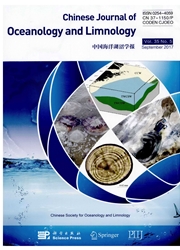

 中文摘要:
中文摘要:
在这研究,贴近的作文和氨基、丰满的酸虾 Litopenaeus vannamei (猎物) 和野、有教养的墨鱼乌贼属 pharaonis 介绍(后者喂了猎物) 被决定并且与 FAO/WHO 建议相比。为在有教养的墨鱼的异白氨酸, phenylalanine+tyrosine, histidine,离氨酸, threonine,和色氨酸的产生分数是 150。EAA (必要氨基酸) 的比率在有教养的墨鱼(0.82 ) 的 /nonessential 氨基酸比在野形式(0.80 ) 高。所有 EAA 氨基酸得分因为有教养的墨鱼比他们的野对应物高,除了 histidine 和色氨酸。两组墨鱼拥有了类似的浸透的丰满的酸内容,与有教养的包含更多总数() monounsaturated 丰满的酸, n-6 多元不堡和丰满的酸( PUFA ),和 eicosapentaenoic 酸( C20:5 n-3 )但是更少的 n-3 PUFA , arachidonic 酸( C20:4 n-6 ),并且 docosahexaenoic 酸( C22:6 n-3 )比他们的野对应物。因此,现在的结果建议那这些有教养的墨鱼比对人的健康的野形式好。尤其是,这些结果也显示这些墨鱼力量的营养的作文被饮食显著地影响了。
 英文摘要:
英文摘要:
In this study, the proximate composition and the amino and fatty acid profiles of shrimp Litopenaeus vannamei (prey) and wild and cultured cuttlefish Sepiapharaonis (the latter fed the prey) were determined and compared with FAO/WHO recommendations. The resulting scores for isoleucine, phenylalanine+tyrosine, histidine, lysine, threonine, and tryptophan in cultured cuttlefish were 〉150. The ratio of EAA (essential amino acids)/nonessential amino acids in cultured cuttlefish (0.82) was higher than in the wild form (0.80). All EAA amino acid scores for cultured cuttlefish were higher than their wild counterparts, except for histidine and tryptophan. Both groups of cuttlefish possessed similar saturated fatty acid content, with the cultured containing much more total (E) monounsaturated fatty acids, E n-6 polyunsaturated fatty acids (PUFA), and eicosapentaenoic acid (C20:5 n-3) but less E n-3 PUFA, arachidonic acid (C20:4 n-6), and docosahexaenoic acid (C22:6 n-3) than their wild counterparts. Therefore, the present results suggest that these cultured cuttlefish were better than the wild form for human health. Notably, these results also indicate that the nutritional composition of these cuttlefish might have been significantly affected by diet.
 同期刊论文项目
同期刊论文项目
 同项目期刊论文
同项目期刊论文
 期刊信息
期刊信息
